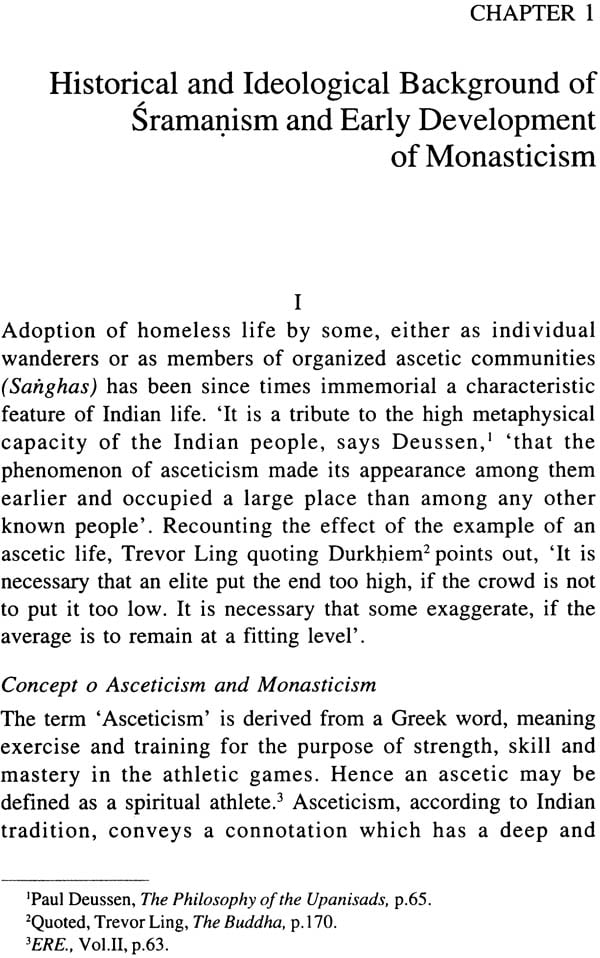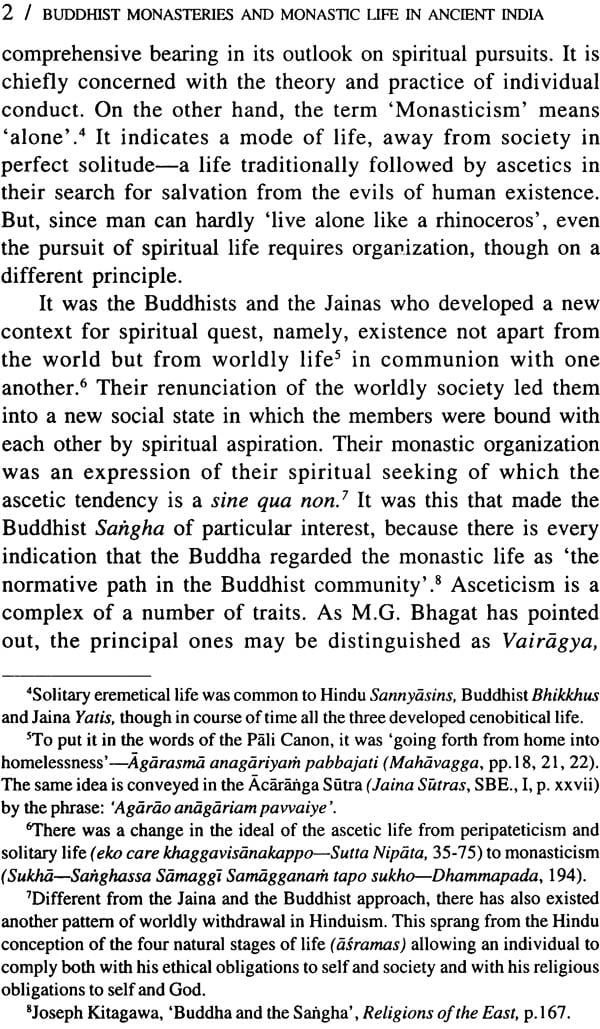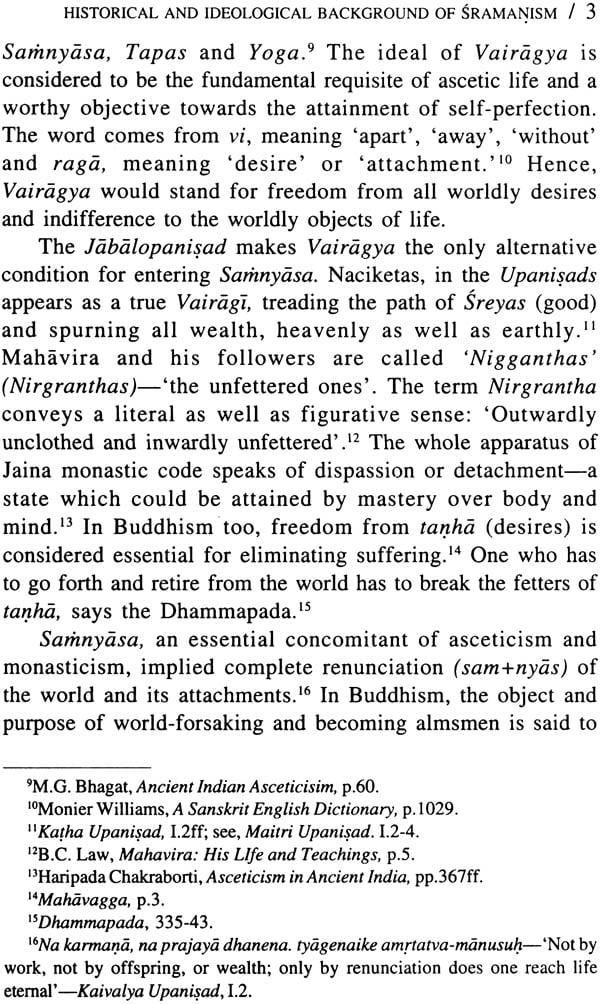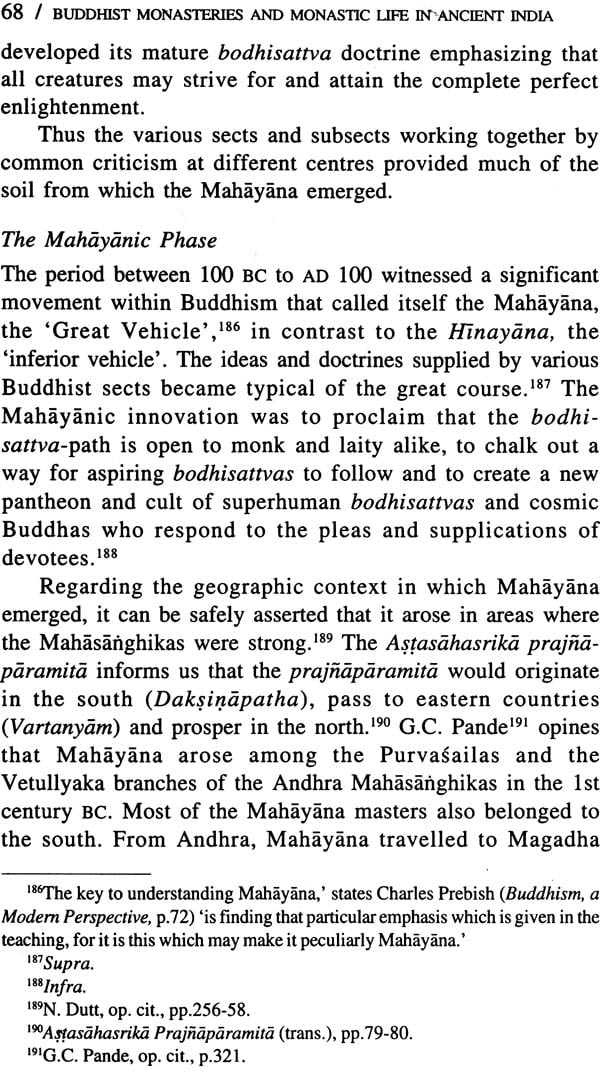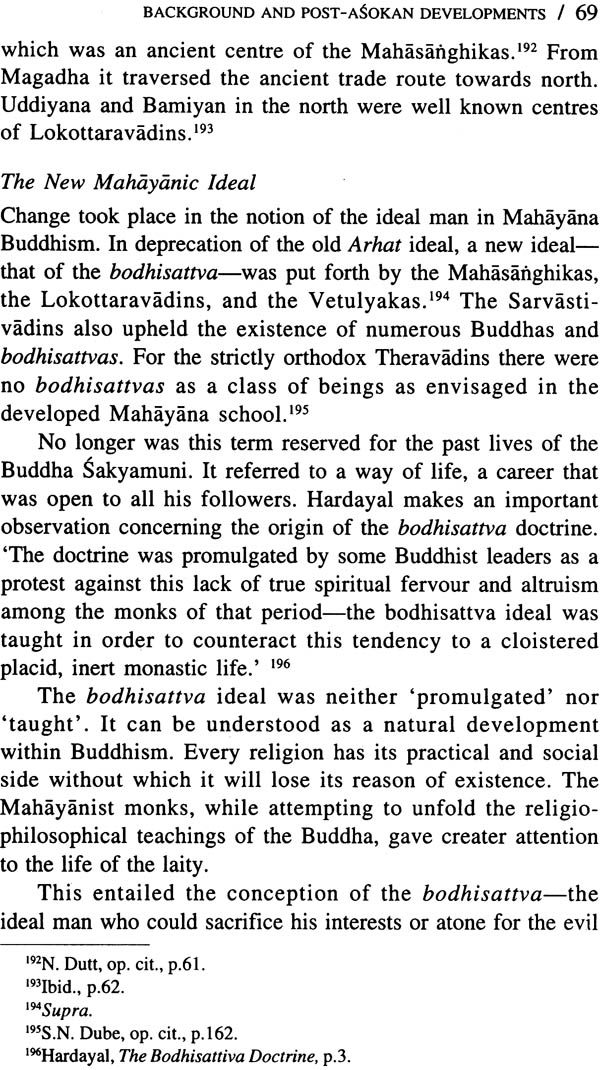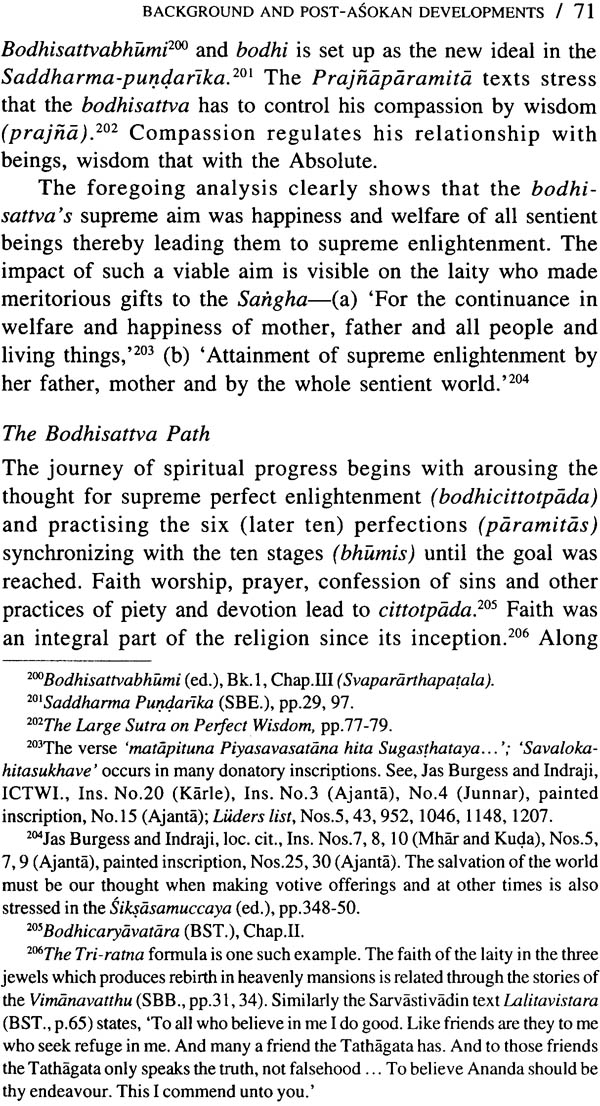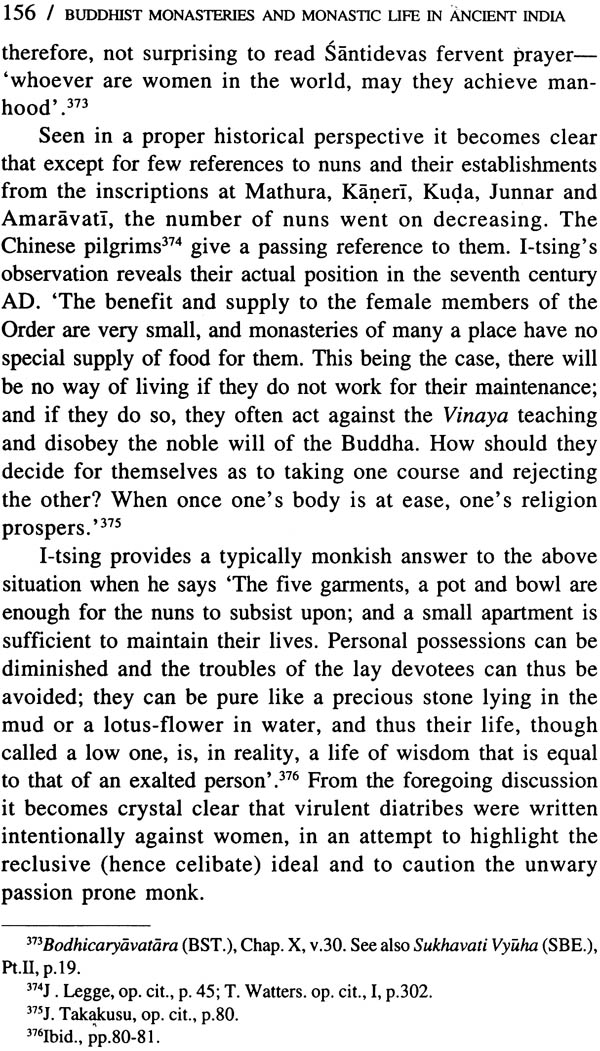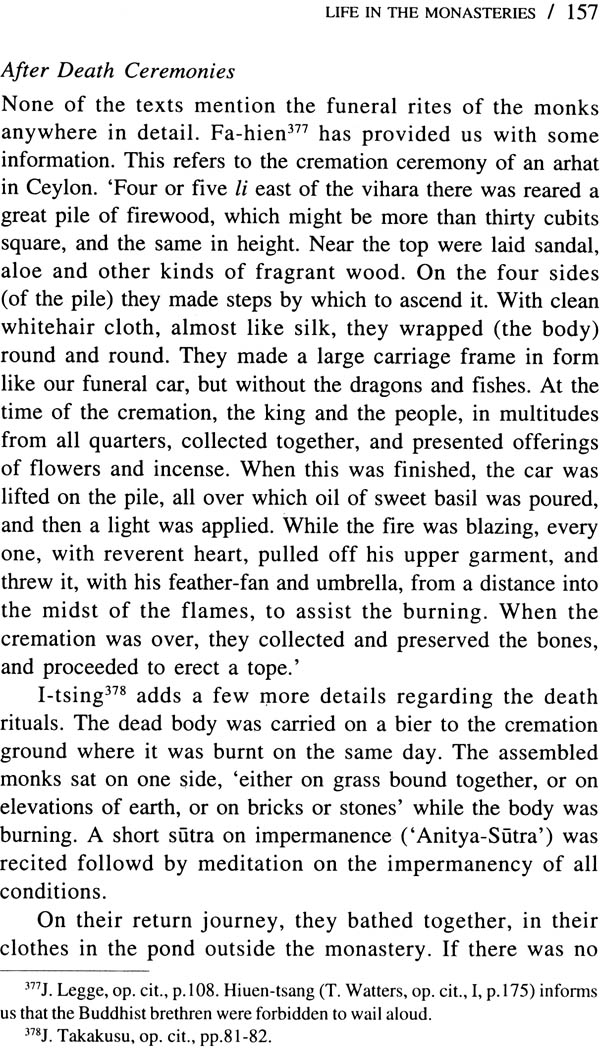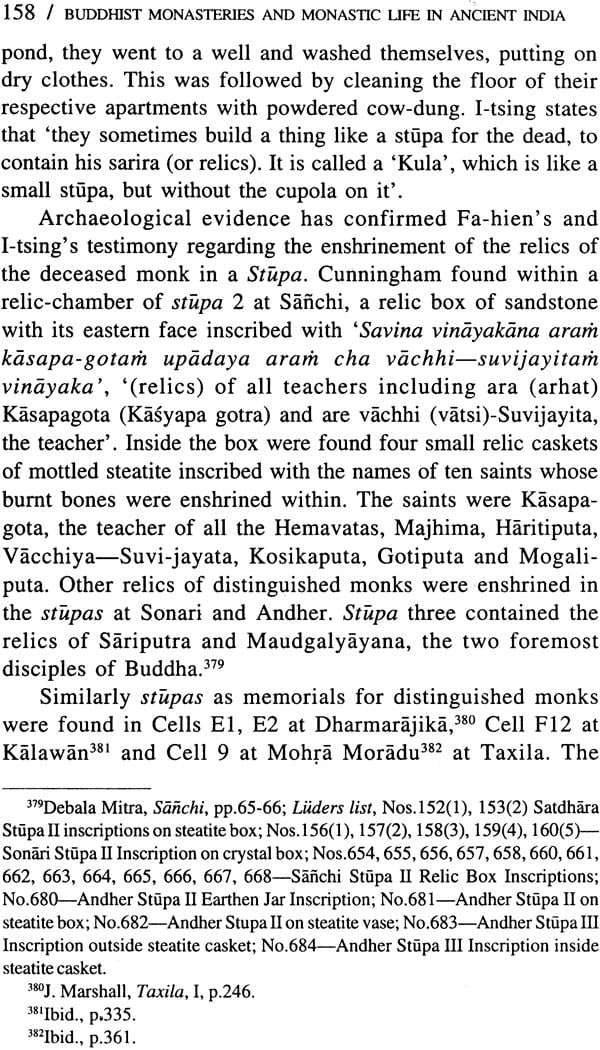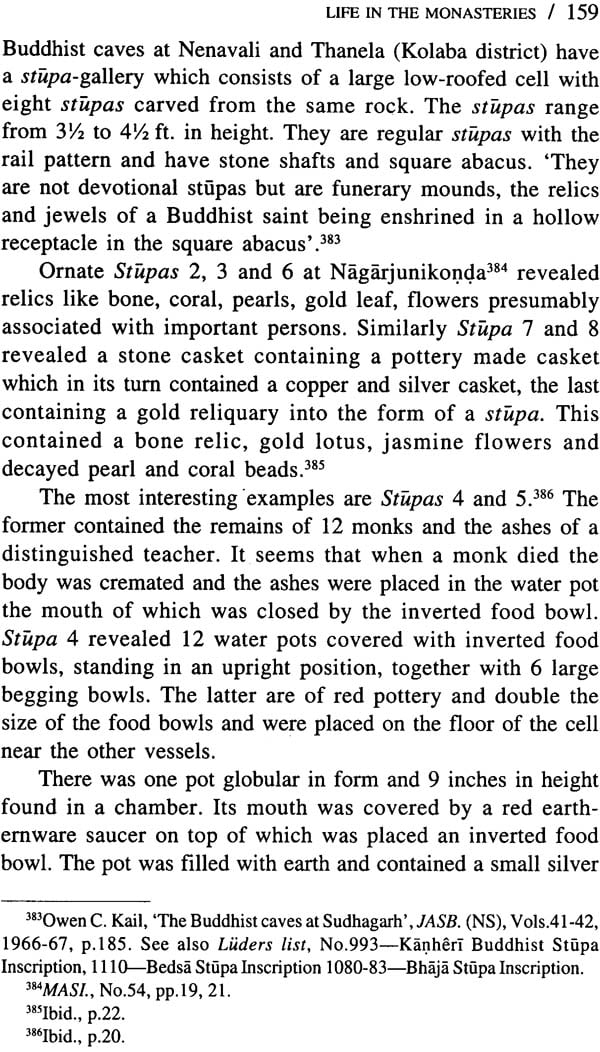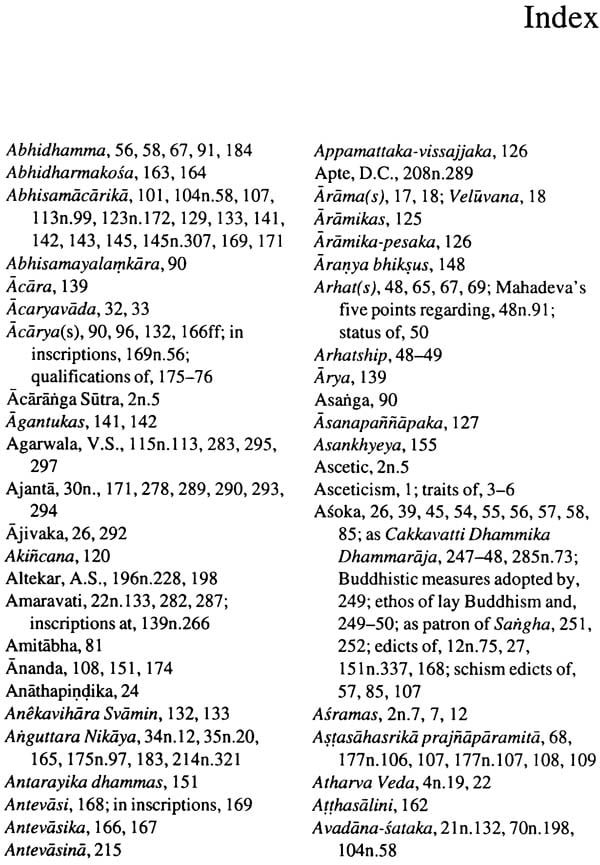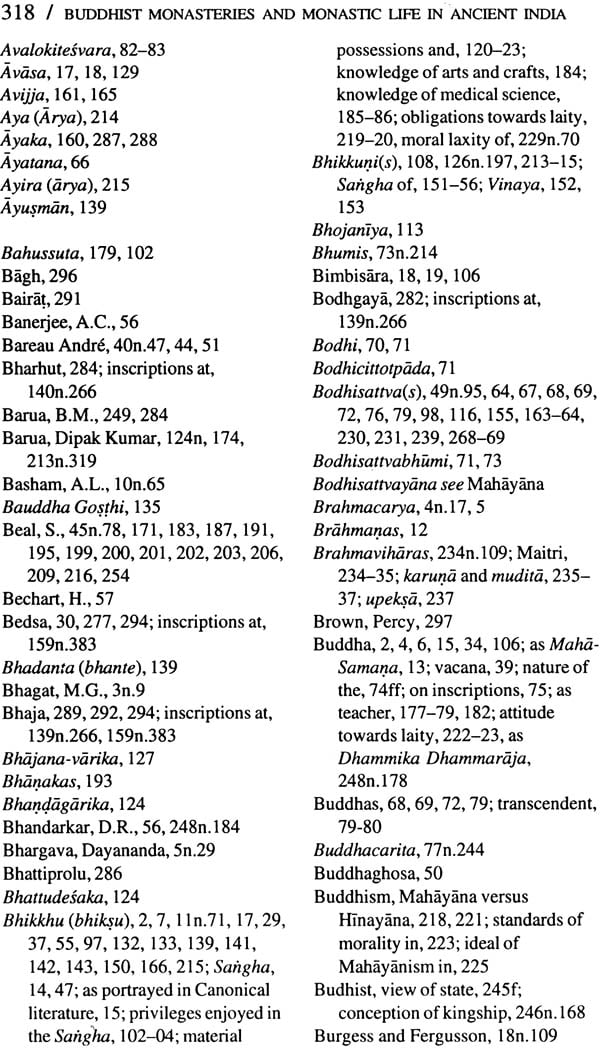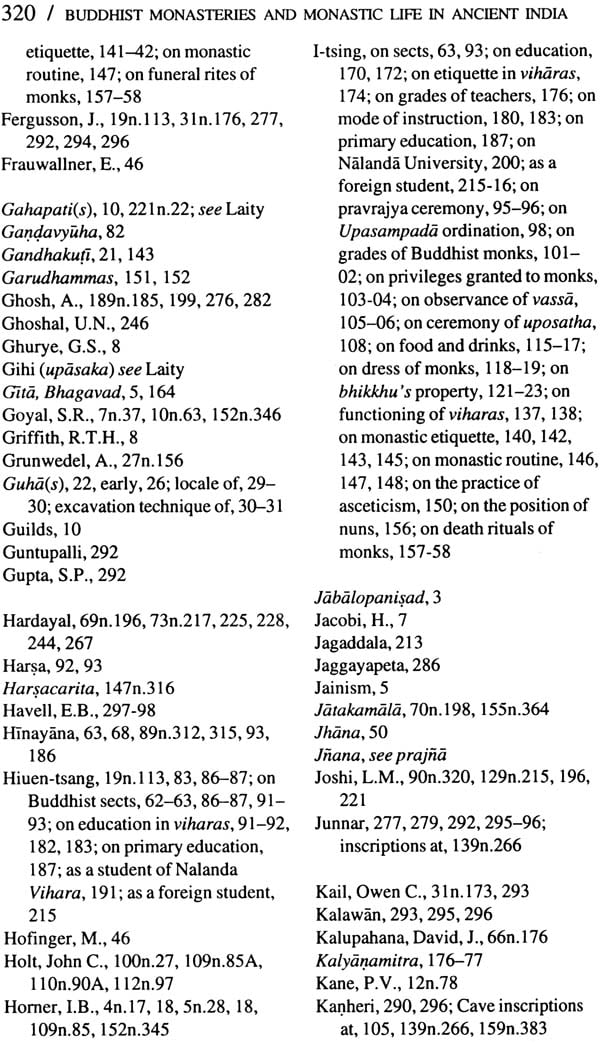
Buddhist Monasteries and Monastic Life in Ancient India (From the Third Century BC to the Seventh Century AD)
Book Specification
| Item Code: | IDI047 |
| Author: | Rekha Daswani |
| Publisher: | Aditya Prakashan |
| Language: | English |
| Edition: | 2006 |
| ISBN: | 8177420674 |
| Pages: | 341 |
| Cover: | Hardcover |
| Other Details | 5.6"X 8.8" |
| Weight | 590 gm |
Book Description
The Path of Asceticism has been recognized as one of the classical ways of salvation in the religio - spiritual tradition of India. Under the process of instionalization over the periods of historical development, asceticism became closely connected with monasticism. The latter may be understood as the concretization of the philosophy of asceticism. Whereas asceticism is concerned with the theoretical and practical aspects of the life of an individual spiritual and seeker, monastic organization presents itself as a social expression of such a spiritual seeking undertaken by such ascetics who share with each other common ideas and beliefs pertaining to spiritual goal other general conduct considerd necessary for its obtainments. In this community from the monastic organizations were bound to evolve certain specific characteristics.
The present work attempts at a systematic reconstruction of some of the principal aspects and peculiar features in the genesis, evolution and functioning of Buddhist monasticism both in terms of an autonomous development and in relationship with the changing conditions of society in India till the seventh century Ad.
The first chapter seeks to define the concept of asceticism and monasticism and throws light on the possible pre-Vedic and pre-Aryan origin of the institution of 'wandering almsmen' in India which flowered in the Sramanism with special reference to the Sakyaputta Samanas. It traces the gradual transition of the primitive Bhikkhu sangha from a wandering sect to a settled order. It shows how the primitive monk settlements represented by the avasas and the aramas gave way, in due course of time, to lenas which became permanent domiciles of the order.
The second chapter presents the background of Buddhist sects and post Asokan developments highlighting the Mahasanghika Sthavira schism, which was product of disciplinary and doctrinal issues. The fourth third century BC was an age of critical transition when numerous sects arose which put forth doctrines varying in meaning significance and implications paving the way, ultimately for the emergence of Mahayana.
In deprecation of the old arhat ideal a new ideal - certain put that of the bodhisattva forth by certain sects. With the radical expansion of world view a Mahayanic pantheon of Buddhas and Bodhisattvas was evolved who it was believed could bestow their grace on firm believers. The mutual relationship of the various sects is epigraphs and accounts of the Chinese travelers.
The third chapter delineates a picture of the life of the inmates in the Viharas where key note of relationship was mutual respect and reverenced. The pabajjaand the upasampada ordination marking the entry of the novice and full membership in the Sangha became an elaborate procedure with the gradual lapes of time. Religious life was marked by many features of congregational character like the uposatha, vassavasa, pavarana and kathina. These ceremonies became days of religious observance and celebration for the laity as well.
With the growth of corporate life, the organizational structure of the Sangha specified status positions with seniority and associated competencies. Office bearers were appointed in community life and to procure and distribute the material possessions permitted to the members.
Food drinks, material possessions, etiquette and the daily routine of the members have been dealt with in detail keeping in view the transformations in certain spheres in response to the waves of social and cultural change. The Buddhist Sangha functioned within the scope of Vinaya laws, which regulated not merely the monk's personal life but also his relations with others and his rights and duties as member of a corporate body. As time went on, old Vinaya rules were amended and modified to suit the needs of the members of the Sangha.
The austere mode of the aranya bhiksus has also been considered. The Bhiksuni Order and the status that it enjoyed finds its due place. Interesting archaeological details are provided about the after death ceremonies of the Sangha members.
The fourth chapter deals with education and learning as imparted and acquired in Buddhist monasteries. The relationship of the Saddhiviharika and the Antevasika Vis-a- Vis the Upajjhaya and the Acariya is unfolded in detail. As the picture emerges with the gradual lapse of time Buddhist monasteries had become centers for the dissemination not only of Buddhist teaching also of brahmanical studies and secular branches of learning. Traditional learning was thus progressively liberalized and the curriculum included instruction in arts and crafts, medical science, logic, grammar, astronomy besides the sacred sutras and sastras. As a matter of historical necessity with the rise of Mahayanism and the priority given to the laity the viharas far from being seats of monk life and culture became seats of secular learning.
A new development of monastic education was the growth of specialization in different versions of the Vinaya the Sutraand the Abhidharma. The urge for disseminating knowledge among people and preserving it for posterity felt by the Buddhist monk-scholars explains the library tradition in major monastic universities. The catholic spirit of these universities attracted students and scholars from for off places. These universities continued to provide the highest stimulation to independent thinking and reflective meditation.
The theme of the work was suggested to me by the noted scholar of Buddhism, Prof. G. C. Pande who was also helpful in the preparation of the general scheme of the work. I am extremely grateful to him.
A special word of thanks is due to Dr. K. R. Norman, former President, Pali Text Society, London, for unraveling several knotty queries put up to him as well as for his valuable pointers on many issues. I would also like to acknowledge my indebtedness to Shri R. S. Mishra, Associate Professor, Department of History and Indian Culture University of Rajasthan, Jaipur, for his helpful and critical suggestions on many vital points.
The valuable assistance extended by the library staff of the University of the Rajasthan and of the Archaeological Survey of India for making available various materials is gratefully acknowledged. I am also obliged to Dr. Jata Shanker Jha, former Director, K. P. Jayaswal Research Institute, Patna, for putting up patiently to my constant pestering of him in my hunt for reference material and for providing me with certain valuable texts.
I am thankful to my brother Surendra Daswani for helping me in the translation of certain French and German passages in this thesis. It is my pleasant duty to express my sincere gratitude to late Shri Pradeep Goel, Aditya Prakashan, Delhi, for kindly undertaking to publish the work and for taking immense paints to bring out the book in its present form.
From the Jacket
Dr. Rekha Daswani is presently working as Associate Professor in the Department of History and Indian Culture, University of Rajasthan, Jaipur. She has been teaching specialized papers on Buddhism in the department for the past several years and has contributed learned papers to various journals. At present she is working on the History of Religious Ideas.
This book provides an authoritative and critical account of Buddhist monasteries and monastic life in India spanning the period 3rd century BC to 7th century AD.
Within a broad framework encompassing the growth and eventual decline of the monasteries, it trains its focus on their place as centers of education, scholarship and intellectual forment, contributing to the traditions of free and logical thinking. All this is covered in the context of the development of monasticism and the growth of the Buddhist sects.
A notable feature of the book, which distinguishes it from most other works on Buddhist monasteries, is the detailed account it presents of life in the monasteries, based on literary and inscriptional sources as well as foreign traveller's accounts.
Last but not the least the book includes an account of the from and spirit presented by the remains of Buddhist monasteries.
| Preface | ix | |
| Abbreviations | xv | |
| 1 | Historical and Ideological Background of Sramanism and Early Development of Monasticism | 1 |
| 2 | Buddhist Sects- Background and Post Asokan Developments | 32 |
| 3 | Life in the Monasteries | 94 |
| 4 | Monasteties as Centres of Learning | 161 |
| 5 | Monasteries and the Social Context | 217 |
| 6 | Existing Monastic Remains: from and Structure | 271 |
| Bibliography | 299 | |
| Index | 317 |
